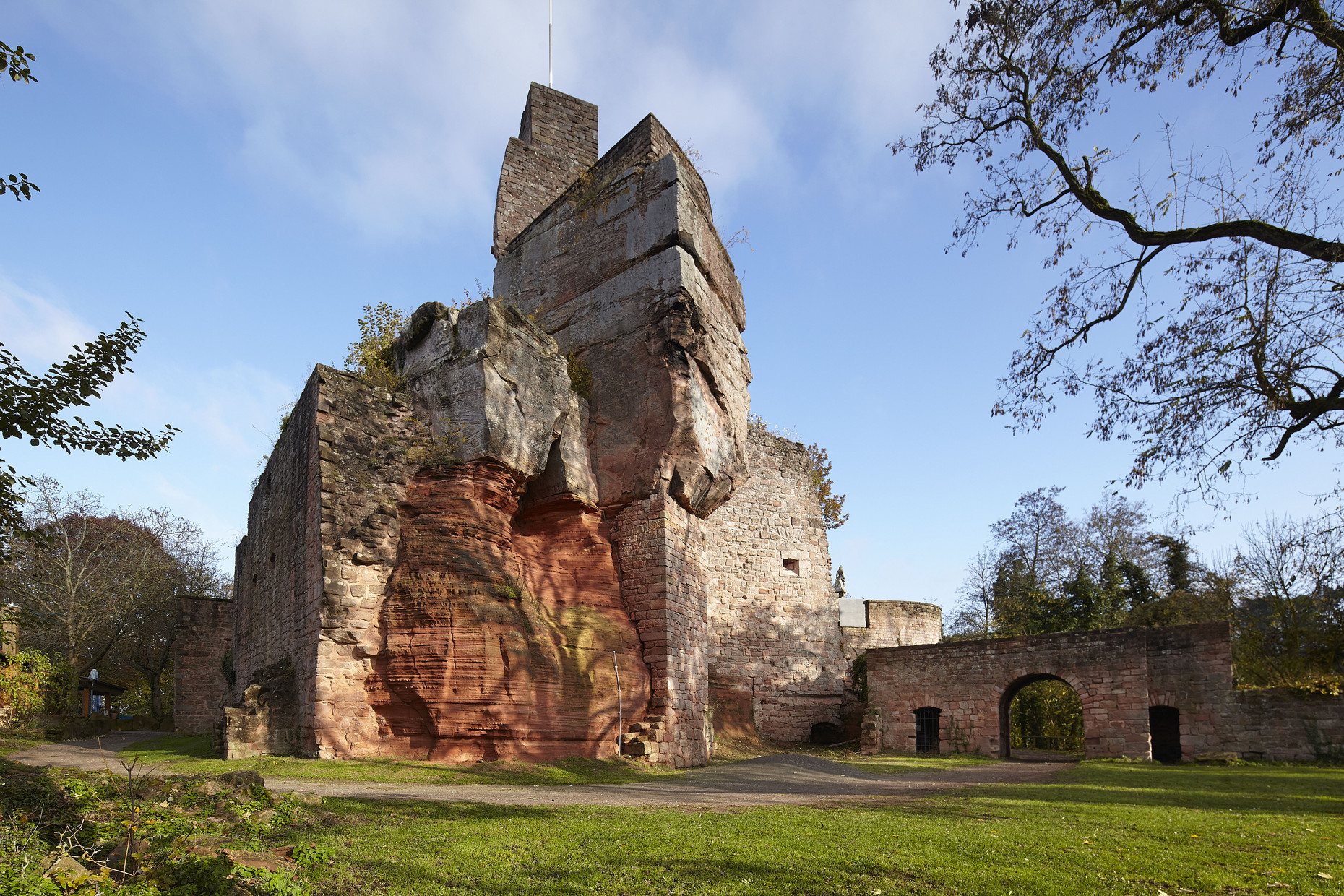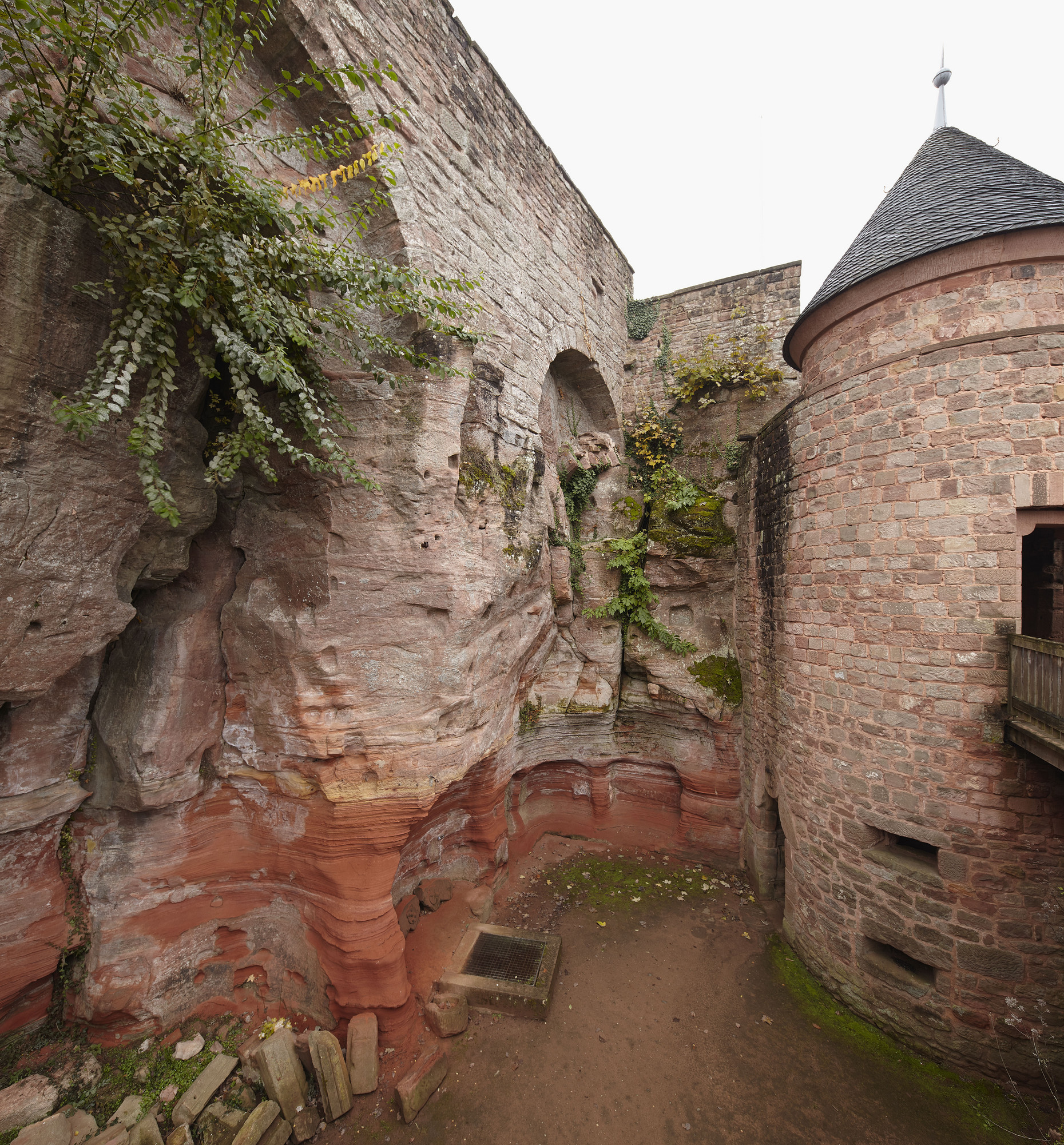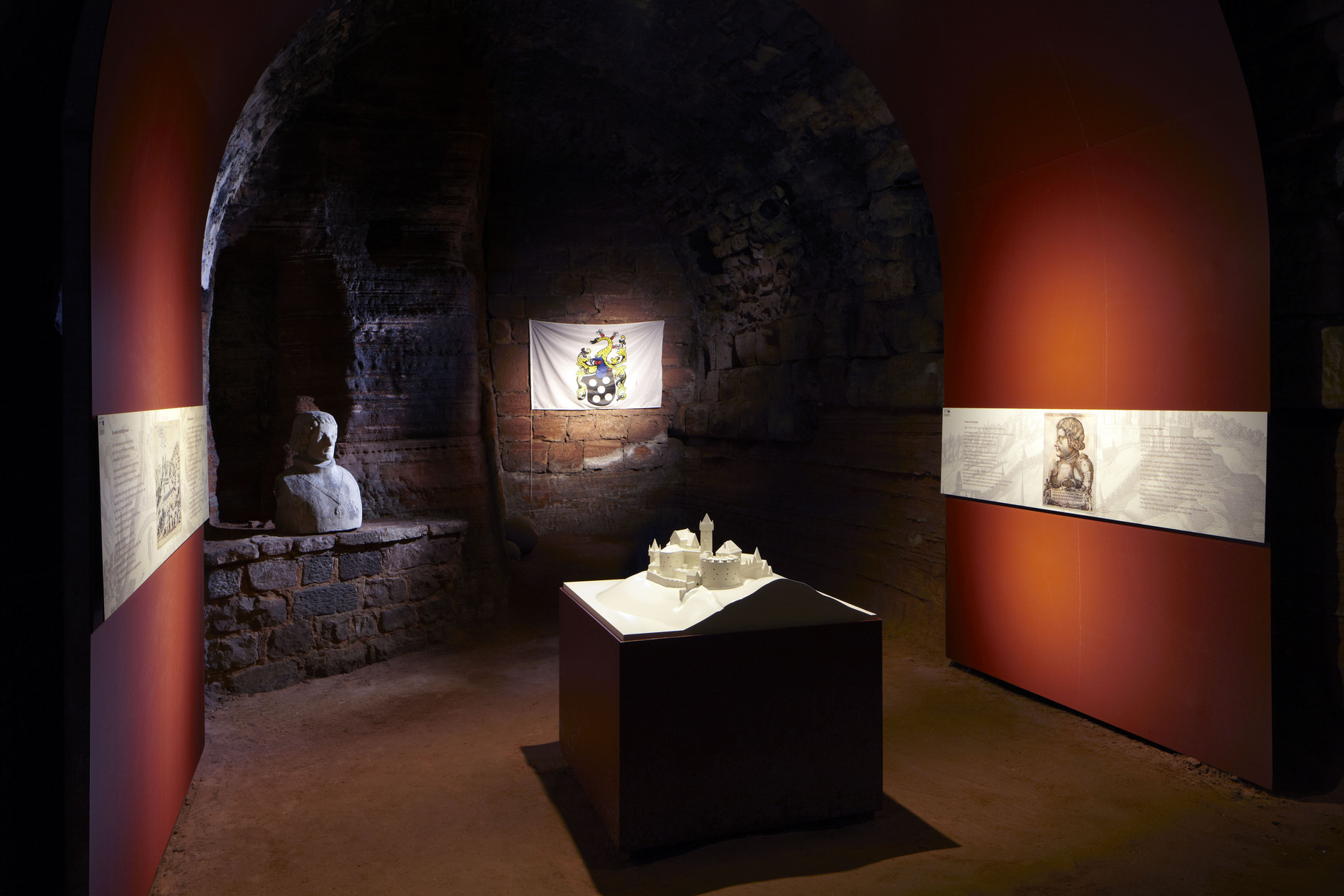Welcome to Nanstein castle an palace ruins
Besieged, destroyed, rebuilt, destroyed … The story Nanstein Castle tells is one of power struggles, defeats and the desire to keep on starting again. Built in the 12th century, it then developed into one of the Hohenstaufens’ largest fortress complexes and was one of the earliest castles in the Palatinate to be designed for combat with firearms. Franz von Sickingen, known as ‘the last knight’, died here in 1523, following a violent siege.
Use the audio guide to find out about the life and death of ‘the last knight’ in the ‘death chamber’ within the castle.
Further information and current opening hours can be found at www.landstuhl.de
Contact
Burgverwaltung Nanstein
66849 Landstuhl
Phone: +49 6371 13460
Nanstein Castle is a historical site of the Generaldirektion Kulturelles Erbe Rheinland-Pfalz (General Directorate for Cultural Heritage Rhineland‑Palatinate), www.gdke.rlp.de
Regrettably, as it is a historic site, there is no disabled access to to the castle ruins. Thank you for your understanding.
Nanstein Castle sits enthroned on a foothill of the Kahlenberg above the town of Landstuhl.
The origins of the castle, which was first mentioned in a document in 1253, are shrouded in mystery. What is known for certain is that it was an imperial castle in the 13th century. In the 14th century, the castle was notable for its frequent changes of ownership until it came into the possession of the Lords of Sickingen in 1482. The best-known representative of this family was Franz von Sickingen, who acquired all the shares of the castle in 1518.
He immediately began extensive remodelling and new construction work to make the castle firearm-suitable. The large roundel, which was one of the strongest turrets of its time, is particularly noteworthy. Franz von Sickingen, infamous for his feuds, chose Nanstein as a place of retreat when he was confronted by a large Princely army in 1523 and died here during the siege by the Princely Alliance.
In the middle of the 16th century, the castle was rebuilt by the descendants of Franz von Sickingen. Between 1590 and 1595, the last reinforcements were turned into the now impressive Renaissance castle. In the 17th century, the complex was occupied and demolished several times and finally destroyed in 1689. Excavation work began as early as the 1850s and 1860s, and at the end of the 19th century the grounds were transformed into a garden monument.
Today, the massive, partially rebuilt turret from the early 16th century dominates the exterior view of the complex. Inside, the castle buildings from the late 16th century can be discovered, but parts of the medieval shield wall and several rock chambers have also been preserved. The so-called death chamber of Franz von Sickingen now houses an information exhibition on the history of the castle. Since 2023, this has been supplemented by a further presentation in the cellar of the large roundabout.
Burgschänke - Burg Nanstein
Burgweg 1
66849 Landstuhl
Phone: +49 6371 4902580
info(at)burgschaenke-landstuhl.de
www.burgschaenke-landstuhl.de
There is a car park directly at the entrance to the castle.


